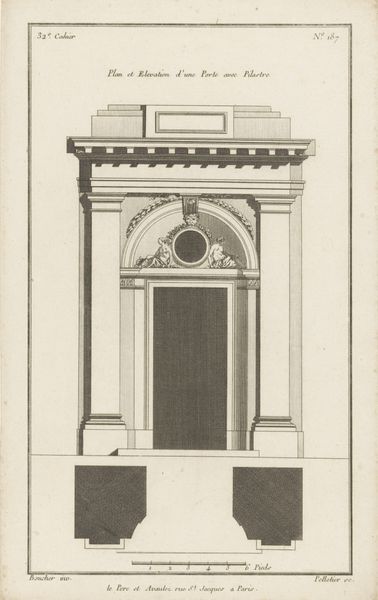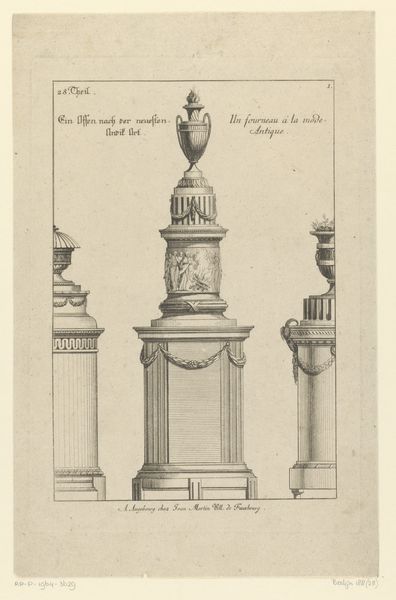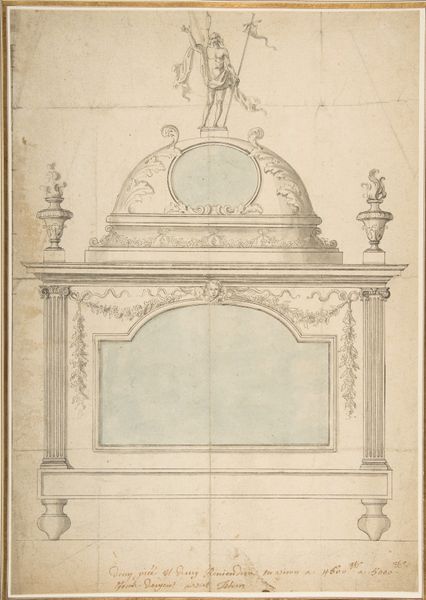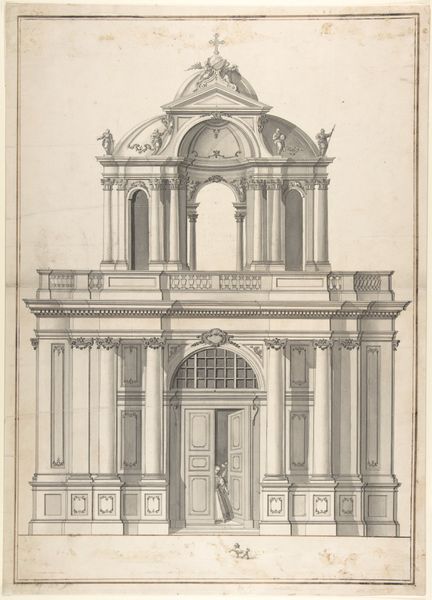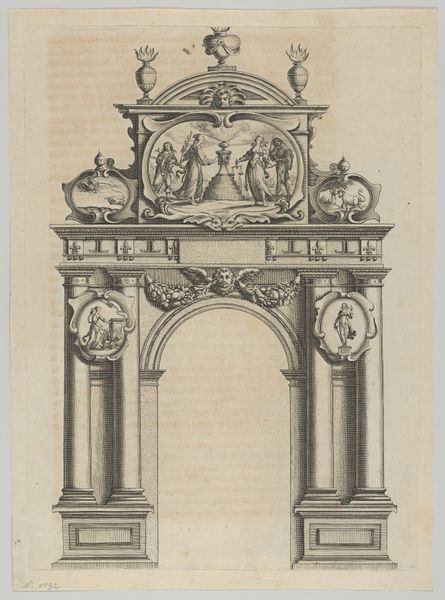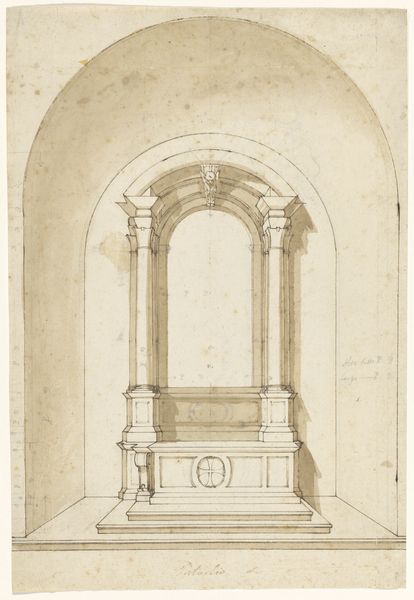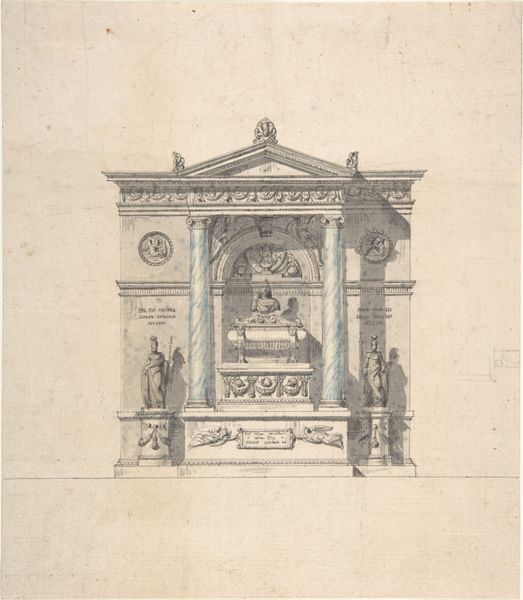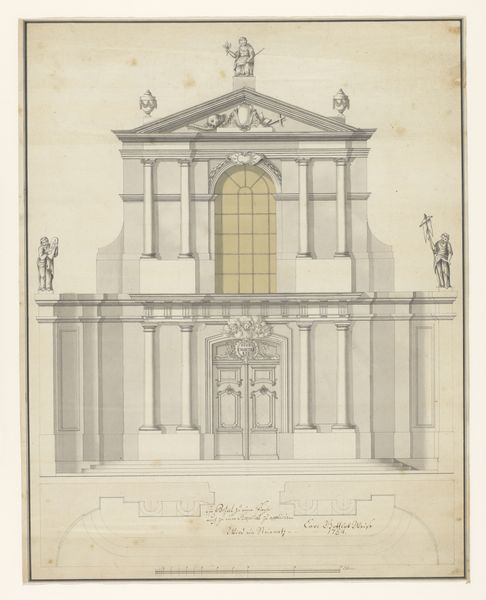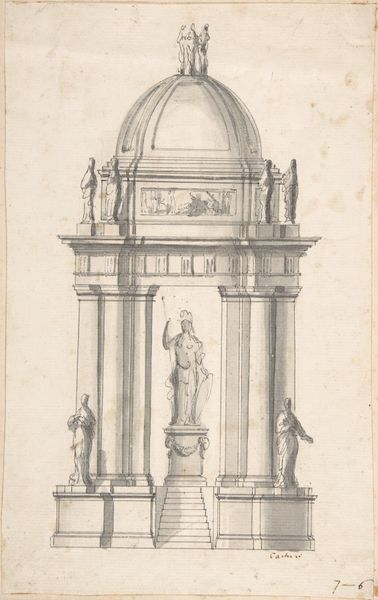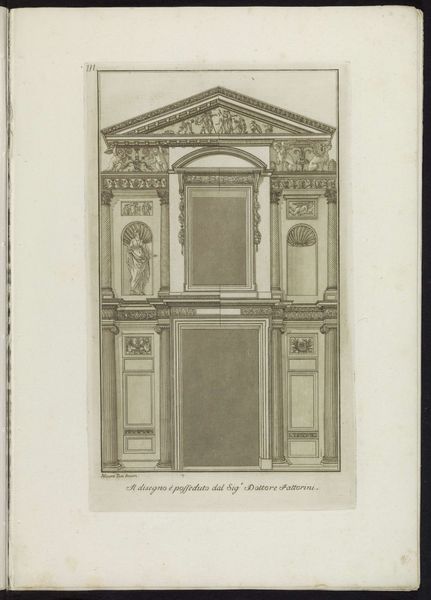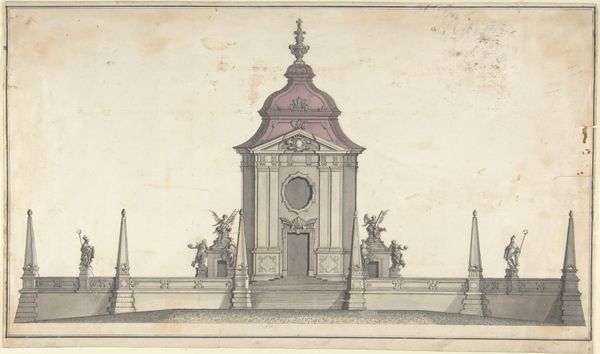
drawing, tempera, print, etching, engraving, architecture
#
drawing
#
neoclacissism
#
tempera
# print
#
etching
#
landscape
#
geometric
#
engraving
#
architecture
Dimensions: plate: 7 15/16 x 4 15/16 in. (20.2 x 12.5 cm) sheet: 9 7/16 x 6 7/8 in. (23.9 x 17.5 cm)
Copyright: Public Domain
Editor: This is "Temple for a Flower Garden," an etching and engraving by Sir John Soane from 1778. It looks like an architect's plan, very precise. What strikes me is how it presents not just the building itself, but also suggests how it fits into a designed landscape. What are your initial thoughts on this work? Curator: My immediate focus shifts to the methods of its production. The etching and engraving, these readily reproducible technologies, speak to a wider dissemination of architectural ideas. Consider how this print form democratizes access to design, moving it beyond the realm of exclusive patronage and artisanal craft. Editor: So, it's not just about the beautiful building itself, but about making its design accessible? Curator: Exactly. The print becomes a commodity, circulated and consumed within a burgeoning market for architectural knowledge. We must examine the role of the publisher, J. Taylor, located in Holborn, a center of print culture. How did this context shape the design and its reception? Editor: I see. Holborn, the publisher... It’s about the labor and distribution involved. Were these types of architectural drawings common at the time? Curator: Precisely. This raises the interesting contradiction inherent in Neoclassicism. Its pursuit of idealized form relied, paradoxically, on industrial methods of production and a society grappling with emerging capitalist structures. The design promotes elite lifestyle through mass produced media. Editor: So it reflects this emerging culture through materiality. I always think about the finished product. But I'm seeing now how the medium is the message, and so much more. Curator: Absolutely. And it encourages us to think critically about the relationship between aesthetics, labor, and consumption. It's all interwoven into art history.
Comments
No comments
Be the first to comment and join the conversation on the ultimate creative platform.
